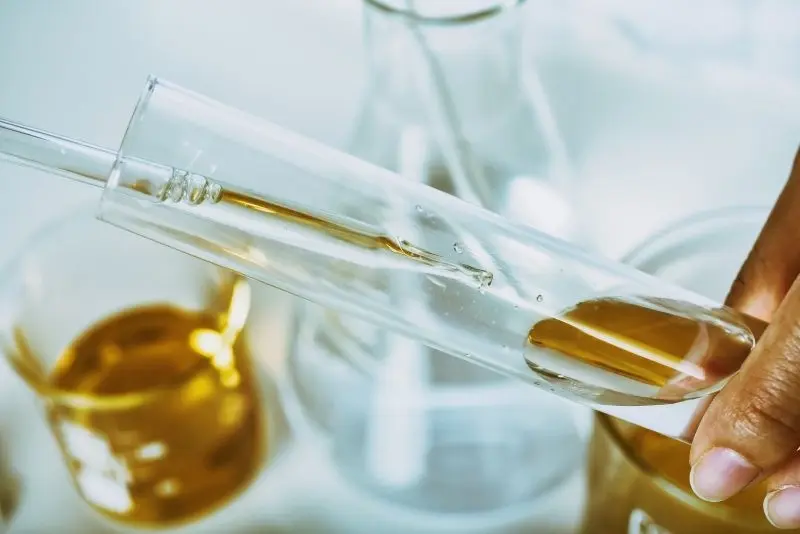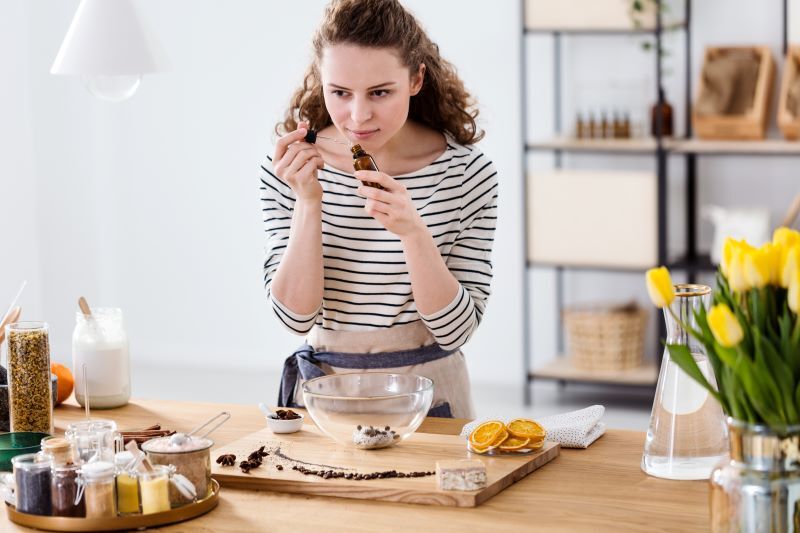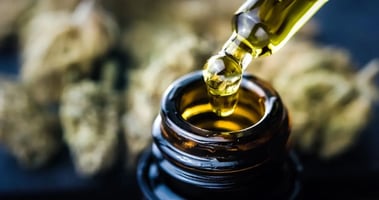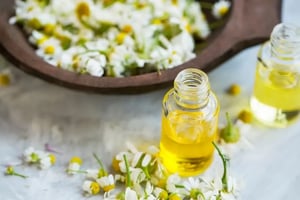May 17, 2023
Essential oil quality parameters: analysis guide

January 31, 2023
What determines the quality of an essential oil?
To guarantee a high level of quality, essential oils must meet a number of criteria. These are controlled from the moment the plant from which they are extracted is grown, and continue throughout the preparation process, right up to the moment they are bottled. To help you understand the quality of an essential oil, we've outlined below the various elements you need to consider before making a purchase.
100% pure essential oil
What guarantees the quality of an essential oil is, above all, its purity. Indeed, to meet its definition as an aromatic liquid extracted from a plant, it must never be mixed with other substances, such as perfumes. Indeed, you may find essential oils at very low prices, on the market, for example. However, these are often "fake" essential oils which are not only ineffective, but can also be dangerous due to the presence of potentially harmful chemicals.
To find out more about the different processes that can be used to alter an essential oil, read our article "Adulteration", does this sound familiar?
That's why, when you buy an essential oil, the first thing to check is that it's totally pure.
It must also be entirely natural, i.e. derived from a plant that has been cultivated or collected in the wild. While this may seem self-evident, there are unfortunately counterfeit "essential" oils made entirely from synthetic molecules.
Join us for more tips on our social networks instagram, facebook and linkedin.
The quality of an essential oil is determined as soon as it is produced
The quality of an essential oil also depends on how the plant species from which it is to be distilled has been cultivated. This is based on the farmer's knowledge of the growing conditions of his crops, as well as the best times to harvest them at maturity.
Next, professionals specializing in the distillation of essential oils will know how to adapt their process to the type of plant they're dealing with (dry or fresh, for example). By applying the right temperature and distillation time, they preserve intact the plant's active ingredients, which will then find their way into the essential oil.
Of course, organic origin is a plus, but it's not always possible, especially when you're dealing with wild plants.
Biochemical and botanical identification of an essential oil

Although an essential oil is pure by definition, it is nevertheless made up of a large number of molecules that give it its different properties. This is why its quality also depends on the identification of its chemotype, i.e. its biochemical composition. This enables us to verify the presence of certain active ingredients and confirm that they are present in sufficient quantity to guarantee the efficacy of the essential oil.
This information appears on the bottle in the form of"linalool","1,8-cineole","geraniol" and so on. This guarantees that the molecules that give the essential oil its properties are actually present in the oil.
In addition, its origin and, in particular, thebotanical species from which it comes, must be clearly identified (in French and Latin), as well as the part of the plant that is distilled (flower, stem, leaves, roots etc.). It is essential that all these characteristics appear clearly on the essential oil label to guarantee its quality and transparency.
Find the full range of 100% pure, natural and authentic essential oils on Landema's online boutique.
Traceability: a guarantee of essential oil quality
Finally, the traceability of each batch of essential oils enables us to verify the origin of the plant (the country in which it was grown), its type of cultivation (organic or conventional), its date of distillation and its full botanical name.
All these elements will enable Landema to indicate a unique identification number, the geographical origin of the essential oil, and its DLUO for each batch made available to you. This acronym stands for "Date Limite d'Utilisation Optimale", and is indicated on the bottle as "Use by:".
To find out more about Landema's expertise and traceability, click here.
The quality of an essential oil depends on its effectiveness, which is why it's essential to check it before buying and using it. There are a number of criteria that will enable you to confirm that you are dealing with a botanically and biochemically defined product whose traceability is guaranteed. Only in this way can you be sure of the effectiveness of its various active ingredients.
Find out more about what makes Landema the supplier of choice for top-quality essential oils here, and our online store here.



